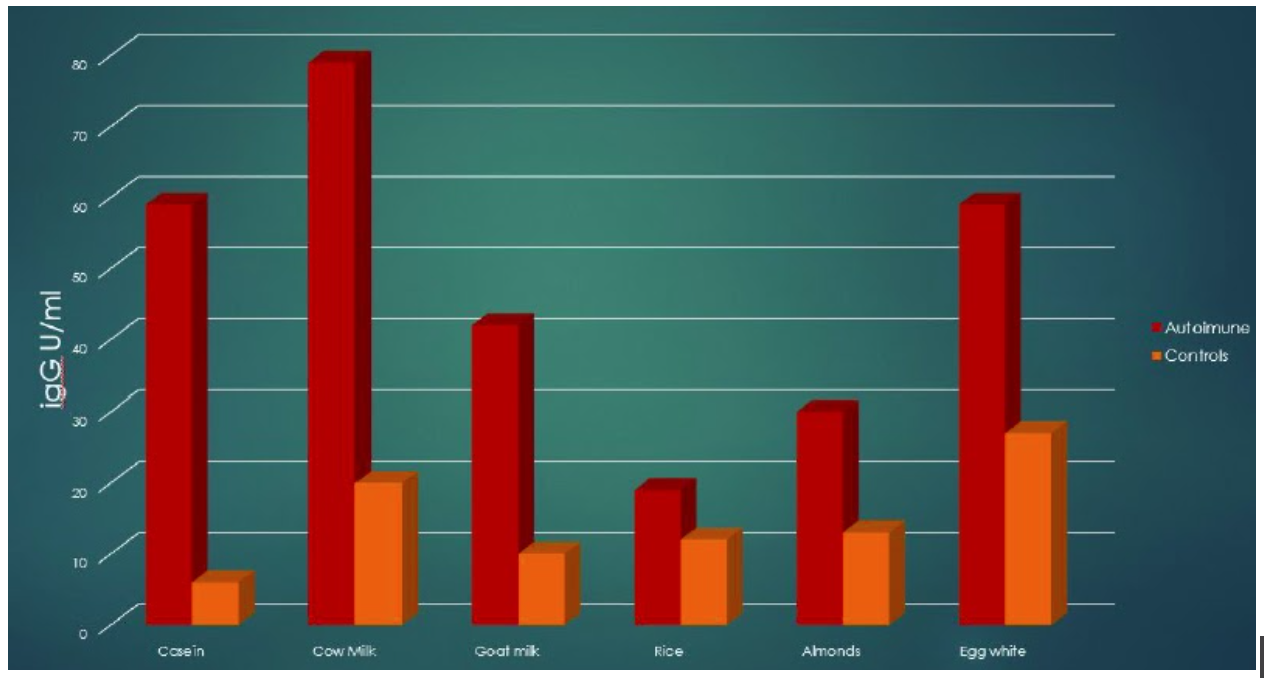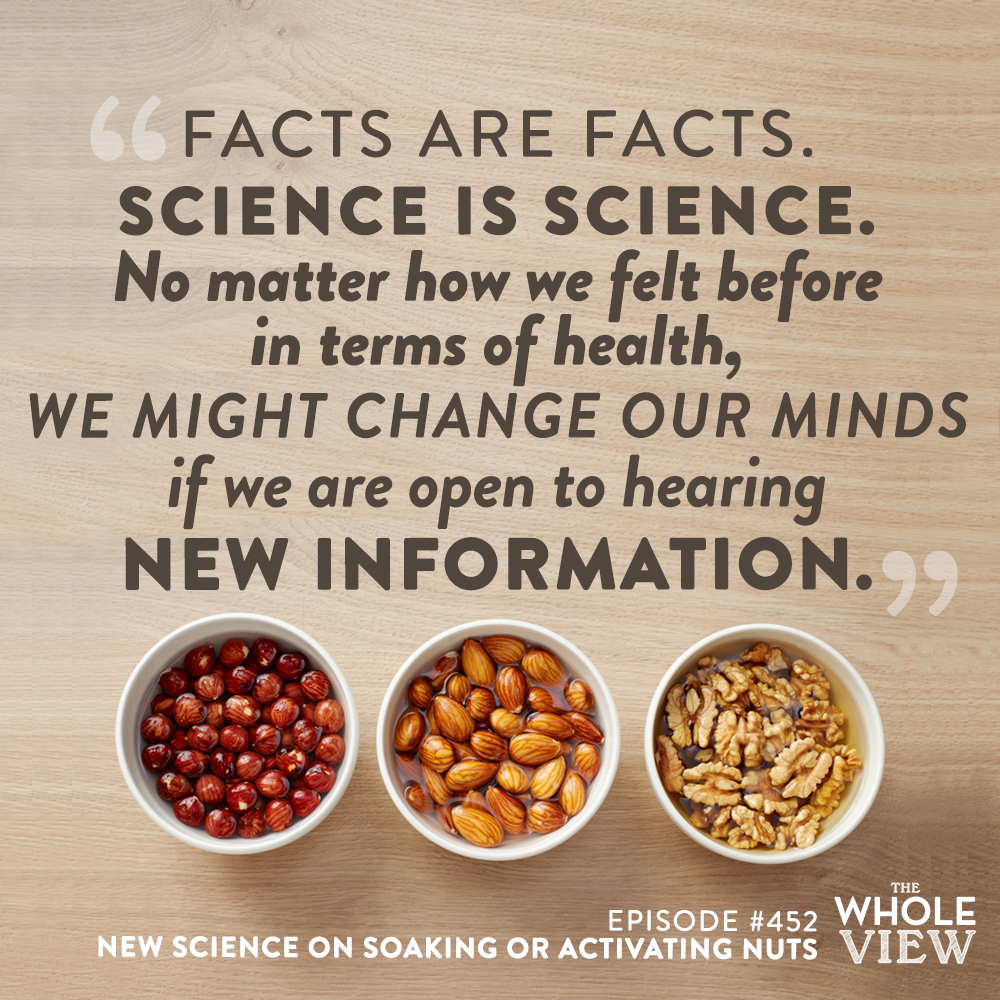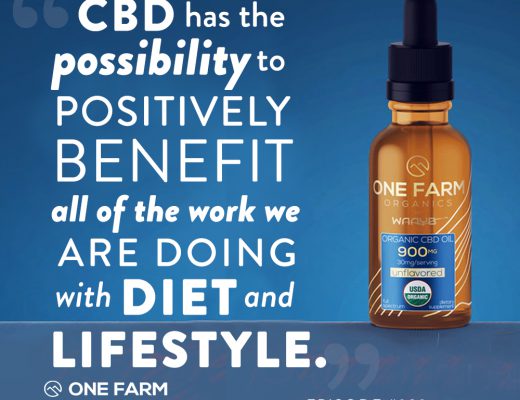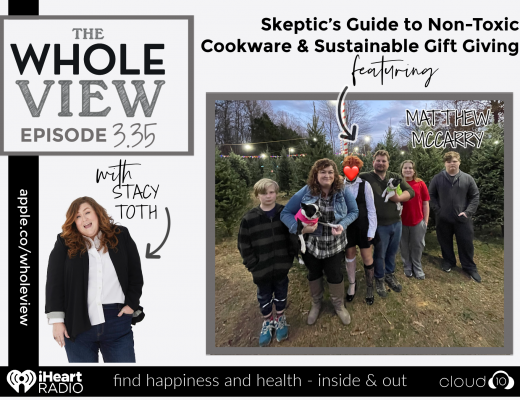 Welcome to episode 452 of The Whole View! This week, Stacy and Sarah look back at soaking or activating nuts and reflect on how data has impacted previous science.
Welcome to episode 452 of The Whole View! This week, Stacy and Sarah look back at soaking or activating nuts and reflect on how data has impacted previous science.
If you enjoy the show, please review it on iTunes!
The Whole View, Episode 452: New Science on Soaking or Activating Nuts
Welcome back to episode 452! (0:28)
Facts are facts; science is science, and no matter how we felt about it before might change if we are open to hearing new information.
Sarah adds that there was science available in previous shows that allowed us to infer some of these things. As more data has become available in the past year, we see that it’s actually not the case.
- Episode 188, Paleo-Friendly Bread:
- Episode 413: The Gut Health Benefits of Nuts
Stacy reminds listeners that this isn’t a one-size-fits-all concept. To make sure the science on this show, which is specific to soaking or activating nuts, isn’t extrapolated into different areas.
We have a question from listener Vanessa:
I’m interested in getting nuts and seeds back into my diet but am wary due to my autoimmunity.
I’ve read all the articles I can find on the subject on your website (even your dehydrator article) and ran a search. Still, there is no mention of soaking (and dehydrating) nuts and seeds to break down the enzyme inhibitors that cause digestive issues. Some nuts give me a stomach ache and bloating (I’ve experimented here and there with low Fodmap nuts), and I have also purchased activated nuts (that have already been soaked and dehydrated). I seem to get on fine with the activated nuts, but if you don’t mention this process in your articles, is this not something you advocate? Thanks – Vanessa
Summarization of Nut Benefits
20 grams of tree nuts per day shows substantially reduced risk (think 20-70%) of cardiovascular disease, cancer, neurodegenerative disease, kidney disease, diabetes, infections, and mortality from respiratory disease. (3:05)
Even three 1-ounce servings per week can lower all-cause mortality risk by a whopping 39%. This means that eating nuts regularly improves health, but they can potentially extend lifespan.
Nut consumption is also known to decrease inflammation markers, including some endothelial markers (called adhesion molecules).
There’s emerging evidence of beneficial effects on oxidative stress, vascular reactivity, and hypertension.
Numerous studies show that people who regularly eat nuts tend to have more favorable blood lipid profiles.
One meta-analysis of 25 clinical studies showed that nut consumption had a dose-response cholesterol-lowering effect.
Interventional studies consistently show that increasing nut intake has a cholesterol-lowering effect, even in the context of healthy diets.
Plenty of research suggests that, despite their energy density, nuts and seeds don’t contribute to weight gain, and they may even protect against obesity and diabetes.
The health benefits of nut and seed consumption can be attributed to their nutritional content, rich in antioxidant vitamins, essential minerals, dietary fiber.
They also include L-arginine, polyphenols, and some nuts that contain high levels of heart-healthy monounsaturated fats and the omega-3 fatty acid α-linolenic acid.
We went into detail in Episode 413: The Gut Health Benefits of Nuts.
The Health benefits of nut consumption do not continue to increase beyond about 20 grams per day.
And there’s some evidence that consuming large amounts of nuts daily can increase disease risk (at least for stroke).
That means we get benefits with about a palmful of nuts and seeds per day, but that eating more than that won’t do us any favors (and may potentially undermine our health).
Why Aren’t They AIP?
Tree nuts are among the most allergenic foods, with true allergies (meaning the body produces IgE antibodies against proteins in nuts) estimated at about 1% of the total population. (9:00)
Some preliminary scientific studies show that nut intolerance may affect a whopping 20 to 50% of us.
People with autoimmune disease are more likely to test positive on food intolerance panels than healthy people.
One 2018 study evaluated the level of IgG antibody production in autoimmune disease sufferers.
This is compared to healthy controls and found that autoimmune disease sufferers produce double and up to 10X more IgG antibodies against foods than healthy people.

The most common food intolerances in people with autoimmune disease are the foods already eliminated on the AIP.
This is because they are inflammatory, disrupt hormones, or negatively impact gut barrier health, including grains, dairy, egg whites, and legumes.
See How Gluten (and other Prolamins) Damage the Gut, Worse than Gluten: The Agglutinin Class of Lectins, 3 Myths About Legumes — Busted!, The WHYs behind the Autoimmune Protocol: Eggs).
The other foods that test positive with high frequency are nuts and seeds.
Another 2015 study compared the frequency of IgG food intolerance in Inflammatory Bowel Disease sufferers compared to healthy controls.
What The Data Shows
Nut and seed intolerance was very common, especially in Crohn’s disease sufferers. (13:30)
This is also something that won’t improve over time with exposure. Mouth and lip-tingling is a pre-anaphylaxis sign.
| Nuts & Seeds | % Crohn’s patients with IgG Ab | % healthy controls with IgG Ab |
| Almond | 16 | 0 |
| Pecan | 38 | 0 |
| Sesame | 7 | 0 |
| Sunflower seed | 11 | 0 |
| Walnut | 7 | 0 |
In a 2004 study of people with unexplained gastrointestinal symptoms, cashews are among the most common nut intolerances and affect upwards of 50% of study participants.
Compared to intolerance to almonds, about 28%, Brazil nuts were 23%, and walnuts were 3%.
| Food | % IBS Patients with IgG Ab |
| Almond | 28 |
| Brazil nut | 22.7 |
| Cashew nut | 49.3 |
| Walnut | 2.7 |
In yet another 2016 study of people with unexplained allergy symptoms, also common among autoimmune disease sufferers, pistachios were among the most common nut intolerances, affecting upwards of 60% of study participants.
Does Soaking or Activating Nuts Reduce Risk?
New Science Says don’t bother soaking. (16:49)
We’re going to talk about 4 new studies, two from 2020, one from 2019, and one from December 2018.
All consistent with each other and point to no benefit from soaking nuts.
Sarah mentions that this is actually quite surprising.
There’s lots of evidence, especially in legumes, that soaking, sprouting, and fermenting reduce agglutinins and phytates.
The amount of deactivation of antinutrients in legumes depends on the specific legume and how it is prepared.
For example, soaking pigeon peas for 6 to 18 hours reduces the problematic lectin content by 38 to 50%, and
soaking kidney beans for 12 hours reduces the lectin content by nearly 49%.
New Data to Study
Likewise, one study found that for white beans, broad beans, lentils, chickpeas, and soybeans, soaking for 12 hours at 78°F reduced phytate levels by between 8 and 20%.
Additional research shows that longer soak times in warmer water result in the greatest phytate decrease.
Lastly, fermentation—which occurs after extended periods of soaking—can reduce phytates and lectins even further.
One study found that fermentation reduced phytates by 85% in kidney beans, 77% in soybeans, and 69% in mung beans, particularly to the bacteria Lactobacillus bulgaricus.
Many of us assumed that nuts would be similar, but this hasn’t been evaluated in the scientific literature until just the last year!
In fact, when Sarah wrote The Paleo Approach (published in 2014), she said:
“It is commonly postulated that soaking nuts in salted water and then drying them improves digestibility, reduces enzyme-inhibitor activity, and decreases phytic acid. This has not been documented in the scientific literature. Still, anecdotal accounts suggest that many people can tolerate nuts that have been soaked and dried even if they do not tolerate raw or roasted nuts.”
Plus, she never actually included a recommendation to soak nuts on her website or in her books. This is because there hasn’t been science to say yay or nay… until very recently!
Sarah’s References: Soaking or Activating Nuts
Sarah references and explains findings from these studies: (25:30)
Lee LY, Mitchell AE. Determination of d-myo-inositol phosphates in ‘activated’ raw almonds using anion-exchange chromatography coupled with tandem mass spectrometry. J Sci Food Agric. 2019 Jan 15;99(1):117-123. doi: 10.1002/jsfa.9151. Epub 2018 Jul 15. PMID: 29808577.
Taylor H, Webster K, Gray AR, Tey SL, Chisholm A, Bailey K, Kumari S, Brown RC. The effects of ‘activating’ almonds on consumer acceptance and gastrointestinal tolerance. Eur J Nutr. 2018 Dec;57(8):2771-2783. doi: 10.1007/s00394-017-1543-7.
Feng Y, Lieberman VM, Jung J, Harris LJ. Growth and Survival of Foodborne Pathogens during Soaking and Drying of Almond (Prunus dulcis) Kernels. J Food Prot. 2020 Dec 1;83(12):2122-2133. doi: 10.4315/JFP-20-169.
Why Would This Be?
My hypothesis is that this is due to the botanical difference.
A legume is typically a pod with multiple seeds that will start to open on its own as it becomes ready for harvesting. Dried beans are those seeds.
A nut is typified by a hard outer shell protecting a single seed that we would call the “nut” and does not open on its own.
Certain temperatures and moisture for very long times, etc., needed to get a nut to sprout, which point the shell splits.
See for example https://www.wikihow.com/Plant-a-Walnut-Tree
A drupe is basically a nut with a pulpy fruit around it.
If you wanted to plant a nut to grow a tree, you’d plant the whole nut with the shell and husk around it.
If you wanted to plan a legume to grow a plant, you’d plant just the seed outside of the pod.
Legumes will sprout (and you could plant those sprouts) on your kitchen counter, but nuts won’t.
What About Making Nut Milks, Yogurt, “Cream Cheese”?
The difference in minerals and phytates is small, +/- ~10%, so if you have to soak for a recipe, don’t worry about it. (41:10)
BUT, soak at a cooler temperature (like 15C, better yet soak in the fridge) to make sure that if your nuts have E-Coli on them, that you don’t’ create an environment where they can grow
After doing this research, I’m actually amending some recipes to have the nut soaking occur in the fridge.
Final Thoughts
Nuts are a healthy food in moderation and great for the gut microbiome.
It’s better to eat raw or roasted and not bother soaking, sprouting, or activating.
Sarah adds that none of these studies were performed on seeds, so we’re still unsure how this affects seeds.
Big shout out to Georgia Grinders, which offers slow-roasted nuts that Stacy and Sarah love- completely unsponsored.
Be sure to pop over on Patreon to hear what Stacy and Sarah really feel about soaking or activating nuts.





